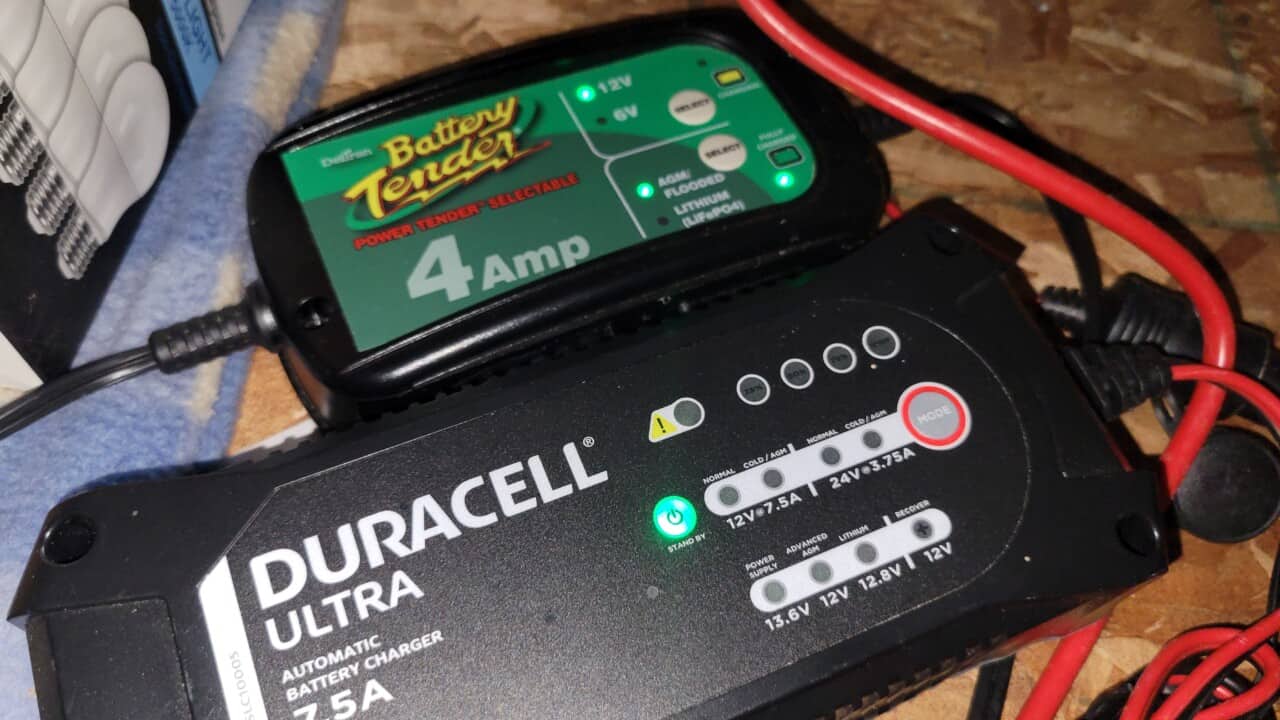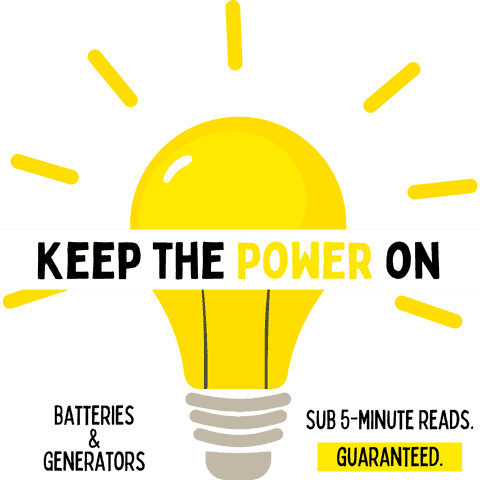Listen to the article below by hitting the play button below and feel free to scroll the page for any helpful visuals. All of the articles on this website will have this audio feature for your convenience.
Charging your car’s 12 volt battery seems pretty straight forward. You either hook it up to a dedicated charger when your car is turned off, or you use your car’s alternator and voltage regulator to replenish any charge that is lost.
Most of us don’t pay attention to the process unless something seems out of the ordinary, such as smoke, steam or if the battery gets hot.
Is it normal for a car battery to get hot while charging?
No noticeable increase in temperature should be observed when a properly sized smart charger is used to charge a car battery with clean battery terminals. A drastic increase in temperature indicates overcharging conditions, an internal short, or corroded battery terminals.
Let’s take a quick look at why these conditions cause a car battery to get hot and what you should be doing to prevent this from happening in the future.
Why a Car Battery Gets Hot when Charging
| Condition | What’s Happening | Cause | How to FIx |
|---|---|---|---|
| Overcharging | Battery cannot convert electrical energy from charging source into stored chemical energy fast enough, excess electricity is released in the form of heat | 1.) Over-sized charger 2.) Battery is at 100% state of charge but charger is still providing a charging current 3.) Alternator/voltage regulator is malfunctioning | 1.) Use a properly sized smart charger (4-10 amps) 2.) Ensure charger has a “float” or “maintenance” mode 3.) Have a mechanic test your alternator/voltage regulator (typically you’ll have electrical issues and a stalling engine as well) |
| Internal Short | Conductive debris has dislodged and dropped between the lead plates inside the battery causing it to rapidly discharge itself and generate lots of heat | Shock damage from crash, bump, or pothole | Replace battery |
| Corroded Terminals / Loose Car Cables | Both overcharging and leaving a car in a perpetual state of discharge can cause corrosion which builds up resistance and heat when charging a battery. Loose car cables connecting the battery also create resistance and heat in the circuit when the alternator is trying to charge the battery | Frequent short trips at lower than highway speeds leads to a perpetual state of undercharge and corrosion Faulty alternator/voltage regulator can cause over or undercharging and corrosion Loose Cables | Remove cables and clean corrosion with a brush and a slurry of baking soda and water, wipe clean Use a dedicated battery charger in the garage throughout the week if you only take very short commutes Have a mechanic check your alternator and voltage regulator Install cables tightly after cleaning terminals |
Overcharging
Overcharging is simply when the battery cannot convert the charging current into stored chemical energy fast enough (or at all if it’s completely charged).
An overcharging condition means that any excess electricity that cannot be converted will pass through the electrolyte and cause electrolysis. This is when electricity breaks apart water molecules and other molecules in the electrolyte. This generates lots of heat and boils out the electrolyte which causes the problem to compound because as the electrolyte levels drop and internal resistance builds up (creates even more heat).
You’ll often hear a bubbling sound (the electrolyte boiling inside), smell rotten eggs (hydrogen sulfide venting out), and possibly hear a hiss or whistle as the pressurized gasses escape through the vents.
Overcharging can happen if you’re charging your battery in your garage with a charger that has charging amps that are too much for your car battery. Most car batteries are the equivalent of 40-100Ah (ampere hours) in capacity, and the general rule of thumb is to use a charger with amps that are 10% or less of the total ampere-hour rating of the battery. Therefore, a 4-10amp charger would be ideal. I prefer 4-5 amps myself.

If you use a charger which does not turn off when the battery is full, then this can also happen. Typically these are old chargers as you’d be hard pressed to find any on the market today that don’t enter into a “float” or “maintenance” mode when the charging process is complete.
Finally, if you have a malfunctioning alternator (or voltage regulator), then your battery may be getting too high of a current and overheating. Typically, an alternator should have a charging voltage of 13.8-14.8. If you start seeing it over 15, then you might want to have it looked at by your mechanic.
Internal Short
An internal short is generally caused by a battery that has experienced shock damage. Dropping the battery, hitting a bad pothole, or having an auto accident can all cause this. The shock to the battery can cause a conductive piece of metal to fall out of place and lodge itself between two or more plates inside the battery. Once this happens, your battery will rapidly discharge, producing lots of heat. Just think of putting steel wool or a foil gum wrapper between two sides of a battery. The affected cells will drop significantly or totally in voltage since they will not be able to hold a charge.
Any attempt to recharge it will cause that cell to heat up rapidly and the other cells will overcharge (and thus get hot themselves) to try to make up for the voltage loss of the bad cell.
In this situation, there is no other option but to replace the battery.
Corroded Terminals / Loose Car Cables
Corroded terminals are generally caused by any vented electrolyte liquid or steam from overcharging coming in contact with the terminals, or from leaving the battery in a perpetual state of discharge. Typically, the negative terminal will turn white from being undercharged or the positive terminal will turn greenish white from being overcharged.
Both corrosion buildup and loose car cables that attach to the battery terminals will cause resistance in the circuit, backing up the electrons around the terminals and causing them to get so hot that they could actually melt the plastic casing around the terminals or the insulation around the car’s cables.

How to Prevent a Car Battery from Getting Hot when Charging
To solve overcharging issues, be sure that you’re using a modern smart charger with a “float” or “maintenance” mode when it completes the charging process. These charges can be left connected to the car’s battery indefinitely. Also, be sure that your charger falls within the 4 to 10-amp range for a gentle but effective charge. A charger in this range will easily be able to recharge a dead battery overnight in most cases.
If you’ve got a hot battery and you’re also experiencing a stalling engine and problems with your electronics in the car, it’s best to have a mechanic check out your alternator and voltage regulator. Before doing so, however, I’d make sure to remove your cables to your battery, check for (and clean) any corrosion and tightly hook up the cables again to see if this fixes anything.
In the event of an internal short, there’s nothing you’ll be able to do except replace the battery. One indicator that this is the case is if you charge the battery, it gets hot, and rapidly loses a significant portion of its charge when disconnected from the charger.
Finally, if your issue is due to corrosion or loose fitting cables from your car’s electronics, be sure to remove them and clean the terminals with a paste of baking soda and water and scrub with a wire brush if you see any white or greenish white powder on the terminal studs. If the eyelets from the cables are corroded, you can shine them up with a piece of sandpaper as well after you’ve cleaned them of the powder.
Make sure to hook up the cables tightly and check by trying to move them afterward to make sure they’re secure.
